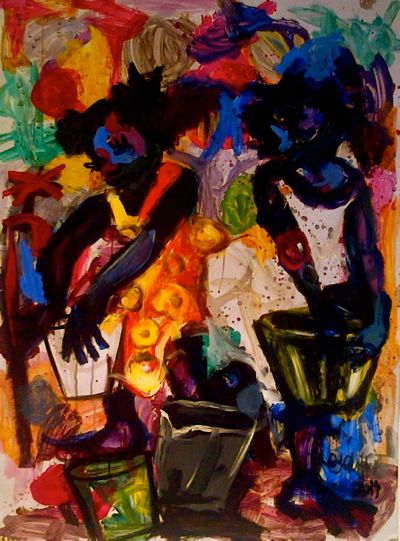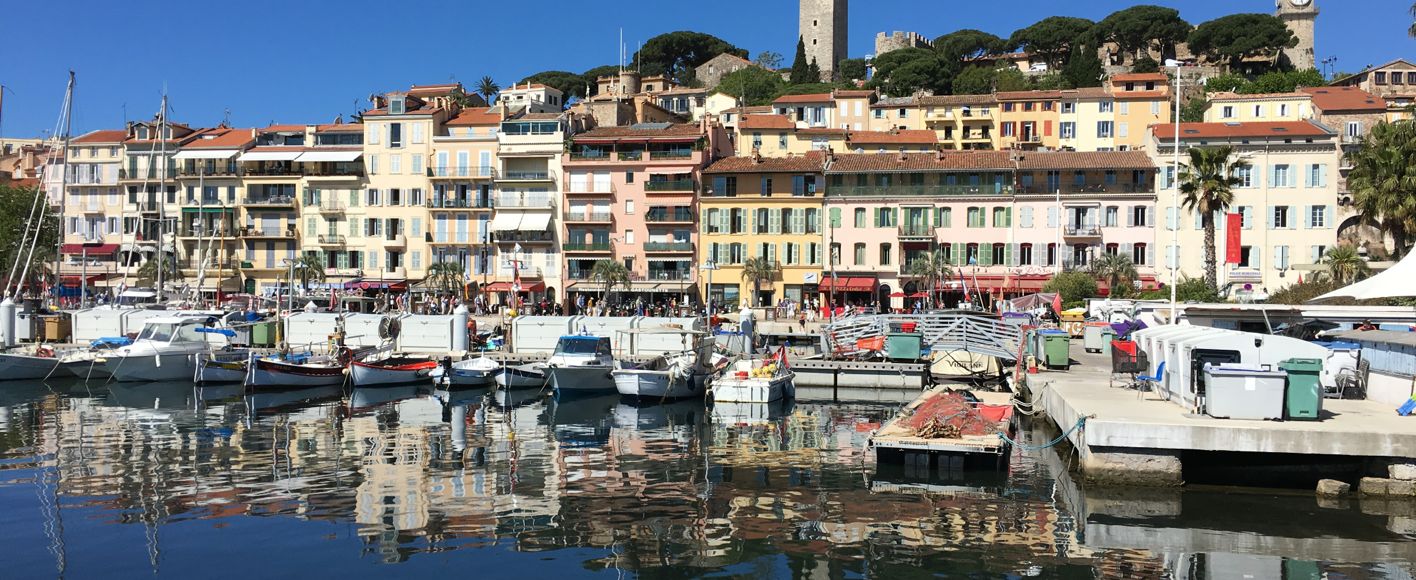 1.54 Art Review
1.54 Art Review(Images 4, 3, 2, 1)

An estimated $1 billion of art rested under canvas in Regents Park during 2013’s Frieze week, bringing in its wake the peripatetic collectors, dealers, critics and bon vivant’s of the global slipstream. The brainchild of Amanda Sharp and Matthew Slotover, Frieze Art Fair has cemented London’s reputation on the nexus of 21st C. ‘cool’. The sister fair Frieze Masters (est. 2012) has further contributed to the city’s cultural currency.
Where ‘cool’ goes the money goes and vice versa. One only has to view the recent explosion of South London’s real estate market- aligned to the seminal ‘Bold Tendancies’ Peckham car park exhibition - to realise the shared transiency. Flux now exists in every domain of global hyper capitalism. Africa is now home to some of the world’s fastest-growing economies. Banks and multilateral finance institutions promote the line ‘Africa surpasses Asia’. The continent’s consumer-facing industries are expected to grow by $400 billion, by 2020[1]. The acceleration of emerging markets stimulates game changing strategies. Vis-à-vis the contemporary art world responds accordingly.
This year’s Frieze was noted for the inclusion of South African gallery Stevenson, whose bold stand showed work by artists Meschac Gaba, Robin Rhode, Viviane Sassen and Nicholas Hlobo. The ‘hose pipe’ tentacles of Nicholas Hlobo’s sculpture ‘“Balindile I” absorbed the floor space and the attention of passers-by and the Tate Acquisition Committee. Supported by the Outset Fund, the work now forms part of the Tate’s National Collection.
“We want to be part of this excitement and this energy. We want to be part of this new form of radical thinking” Chris Dercon, Director Tate Modern
It is an easy faux-pas to homogenise any emerging art market. This year’s inaugural 1.54 Contemporary African Art Fair sought to re-address. Located within the neo-classical architecture of Somerset House and titled in reference to number of countries in the continent ‘1.54’ provided aesthetic refreshment from the vigour of Regents Park. Sponsored by BMCE Bank, Bank of Africa and GASOL the fair showcased new dealers from Abidjan, Mali and Lagos alongside Western stalwarts.
The first work to hit the punctum[2] was Dominique Zinkpè’s ‘Historical Complication’ (2013), which was at once agitated, arresting and fantastical. Originating from Cotonou, in the Republic of Benin, Zinkpè registered on the aesthetic radar in 1993 when he was awarded the ‘Prix Jeune Talent Africain’. Nurtured by Gallery Omenka (Lagos) Zinkpè’s paintings and sculptures burn with complexity. Distorted appendages, ethereal voodoo and expressive colour abound. While Jean-Michel Basquiat’s hallucinations appropriated West African and Christian culture, Zinkpè extends this unresolved fusion with panache.
Elsewhere Ernest Mancoba dominated the Galerie Mikael Andersen booth. His elegant synthesis of European Modernism and Ubuntu spirit was uplifting. A set of 7 monochrome works were restricted via geometric placement. The fine distracted lines within evoked ritual woodcuts, freedom and experiment.Frequently described as ‘Africa’s most original modern artist’ [3]Mancoba was raised in South Africa under apartheid. His progressive abstract style developed after moving to Paris in 1938. Aligned to the CoBrA group Mancoba believed the universal language of art could cut through time and distance to forge a better humanity.
Whilst I admired Mancoba Picasso’s ‘“Femme assise au chapeau” sold for $7 million in the tent[4]. Cubism and Abstraction appropriated primitive art to challenge western tradition. Naturally the aesthetics of Mancoba et al. work well for collectors of investment grade artwork. For those wishing to ‘lift’ their collection -out of the constraints of alpha market consolidation- the search is over. The ethical maze of visual signifiers and diasporic influences within the continents varied aesthetics will relieve and reframe.
Mancoba “enters the space of modernism formed and perpetuated by the colonial myth of white racial supremacy and superiority and demolishes it from within” Rasheed Areem
At the 1.54 forum ‘Exploring New Territories’ Chab Touré expressed euphoria on bringing his Mali gallery to Art Dubai. The flow had seldom been that way. Dubai was a location where one acquired obsolete Western telecommunication devices to be re-sold in Ségou. This persistent narrative of ‘excitement’ and ‘euphoria’ must be exercised with caution. Economic growth is divided. Elites siphon. Baseline poverty prevails. The continent has a vast ‘defragmentation’[5] task ahead: to reduce internal trade barriers that hinder egalitarian micro enterprise.
Represented by First Floor Gallery Harare Wycliffe Mandopa’s paintings captured this dichotomy. Energised colours and jumbled forms expressed the marginalisation of women and children during aggressive urbanisation. This cynicism was matched by the Economist Intelligence Unit, who bestowed the title on Harare of the ‘world’s least liveable city’ in 2011. Wycliffe Mandopa’s collector base extends from Kenya and Cameroon to bisect Hong Kong, Australia, France, Germany and the UK. At 1.54 works could be acquired from $950.00. This is an arresting statistic in a continent where half live on less than $1.25 a day.....
Returning to London, Foxtons has tracked the spread of the jeunesse dorée and ruffians of ‘cool’ from Shoreditch via Hackney Central to Peckham. Who knows where the art world will oscillate towards next?
Economic ‘scenesters’ swarm over Africa. The Tate buys, Frieze shows, London represents. But this misses the point. To engage in the exuberance and ‘flux’ of contemporary African art is an artwork in itself. Via acquisition - the spirit and challenges of Mali, Nigeria and Abidjan informs and becomes your narrative also.
“the central idea, the most central force, is [art’s] eternal stream of appeal to all human beings in a universal way, timelessly” Ernest Mancoba
Later in 2035 you might stare at your Lekoil[6] canvas and reflect on the year when a curator from Ségou brought his gallery to Art Dubai.
http://www.mikaelandersen.com/
www.firstfloorgalleryharare.com/
[1] McKinsey & Company 2012, The rise of the African consumer.
[2] In terms of Roland Barthes 1980, Camera Lucida.
[3] Rasheed Araeen 2008, Key-note address South African Visual Arts Historians annual conference.
[4] By Acquavella Galleries at Frieze Masters 2013.
[5]World Bank 2012, Removing Barriers to Trade in Africa.
[6] Lekoil Nigerian Oil Explorer floated FTSE 250 May 2013.
 ArboSkin: Durable and Recyclable Bioplastic Facade Mock-Up
ArboSkin: Durable and Recyclable Bioplastic Facade Mock-Up( Photo by Courtesy of Manfred Hammer & 3 images below)

The bioplastic facade mock-up was created within the framework of Research Project Bioplastic Facade, a project supported by EFRE (European Fund for Regional Development). It demonstrates one of the possible architectonic and constructional applications of the bioplastic materials developed in the course of this project. The blueprint is based on a triangular net made up of mesh elements of varying sizes.
Collaborating material scientists (Tecnaro), architects (ITKE), product designers (spek Design), manufacturing technicians (Bauer), and environmental experts (ISWA) were able to develop a new material for facade cladding which is thermoformable and made primarily (>90%) from renewable resources. ARBOBLEND®, a special type of bioplastic granules, can be extruded into sheets which are further processable as needed: They can be drilled, printed, laminated, laser cut, CNC-milled, or thermoformed to achieve different surface qualities and structures and various moulded components can be produced. The semi-finished products serve as cladding for flat or free-formed interior and exterior walls. The material can be recycled and meets the high durability and inflammability standards for building materials. The goal of the project was to develop a maximally sustainable yet durable building material while keeping petroleum-based components and additives to a minimum. The ecological audit was completed by project partner ISWA (Institute for water engineering, water quality, and waste management). Furthermore, the materials’s resistance to microbial degradation was determined.
This research project marks the first occasion for development of bioplastic sheets that are made primarily of renewable resources, can be freely formed, and are furthermore designed for application in the building sector and specifically for building exteriors. At the beginning of this project, such a product was not available on the market. The conception of this material as flame-retardant sheet material also aims at applications for building interiors With this new development, we can therefore soon offer a product that addresses two trends:
- the increasing demand for resource-efficient and sustainable building materials
- the increasing development of buildings featuring double-curved geometries and planar facade components with 3D effects (relief)
Extruded sheets made of the bioplastic materials are thermoformed into identical pyramidal moulding components. The necessary process of contour milling allows for multiple variations among the moulding components as identical thermoformed parts can be processed differently using various CNC milling paths. This allows for the cladding of freeform areas with a single moulded component. The plastic waste that results from CNC milling process is regranulated and directly returned to the extruding process. At the end of their useful life, the facade sheets can be composted or disposed of almost carbon-neutrally.
(image 2)
2 Concept sketch: Realization of freeform areas from identical thermoformed parts that are processed differently using various milling paths
(image 3 )
3 Schemata Production and Recycling
The freeform bioplastic facade functions as a sheet material based shell structure with additional loadbearing and bracing ring carriers and joists. Contrary to common non-loadbearing facade constructions, this construction involves the loadbearing properties of the double curved skin (made of 3,5 mm thick bioplastic pyramids that are mechnically coupled) in the loadbearing and bracing processes of the entire system. On the one hand, this innovative measure shows the potential of modified bioplastics as a bracing material (up to E≈4000N/mm²) suitable for exterior applications as it adds only a minor load due to its own weight (13kN/m³); on the other hand, it allows for the construction of a facade that utilizes a minimized number of points of support and/or mounting brackets on the structural work behind it.
(image 4 )
4 FE-Model Wind and snow loads
Mock-Up Data:
Location: Keplerstr. 11-17/ University City Center
Date of completion: October 2013
Area of facade: 145 m²
Material: biobased thermoplast (equipped with flame retardants) made from >90% renewable resources
Building: escape stairwell of lecture hall M17.02
Mock-Up Planning and Realisation:
ITKE (Institute of Building Structures and Structural Design) -Prof. Dr.-Ing. Jan Knippers,
University of Stuttgart, Germany; Faculty of Architecture and UrbanPlanning
Project Instructor
Dipl.-Ing. Carmen Köhler
Site Engineer
Dipl.-Ing. Manfred R. Hammer
Structural Engineer
Dipl.-Ing. Thiemo Fildhuth
Student Design Team :
Martin LouÄka, Peter Kohlhammer, Adrian Grygar
Programming of geometry
Martin LouÄka
Realization: A
drian Grygar, Serge Deisner, Maximilian Kurz, Martin LouÄka,
Paco Motzer, Jan Tondera, Dennis Gerlach, Alexander Mironov, Dominik Heizmann, Svenja Felis, Maximilian Schäfer, Benjamin Fritsch with support of Michael Tondera (Faculty workshop)
Facade Material:
Dr. Michael Schweizer, TECNARO GmbH, Ilsfeld-Auenstein
Production of the pyramids:
Frank Braun, Hans-Peter Braun, BAUER THERMOFORMING GmbH & Co. KG, Talheim
Product Design
spek Design
http://www.itke.uni-stuttgart.de/entwicklung.php?lang=en&id=58
























